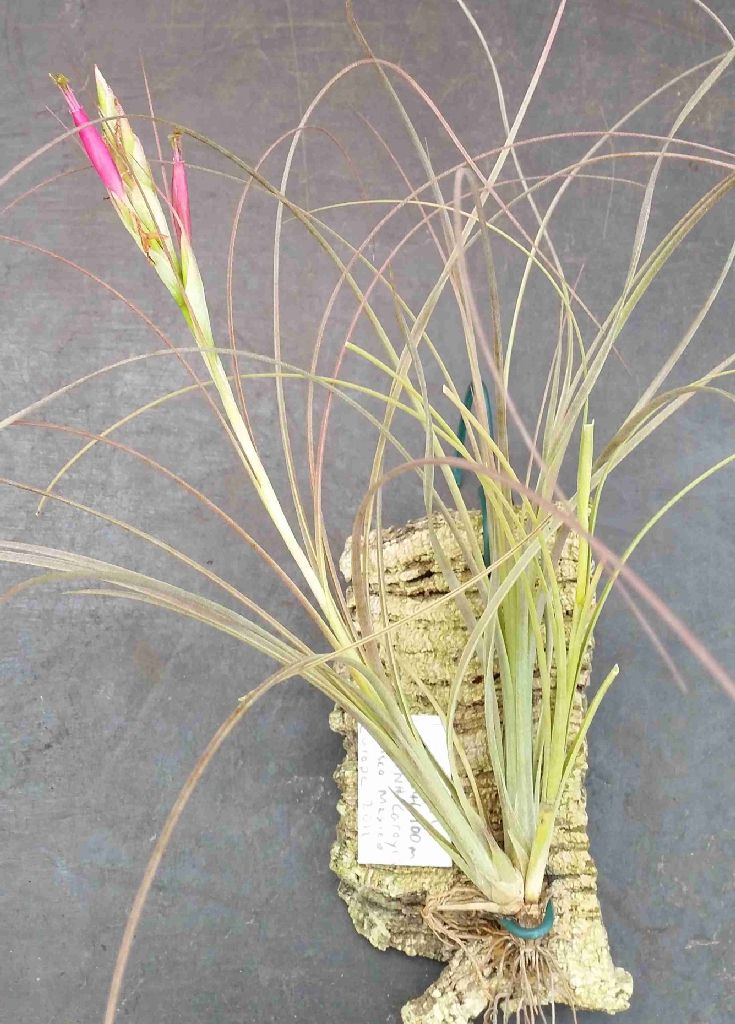
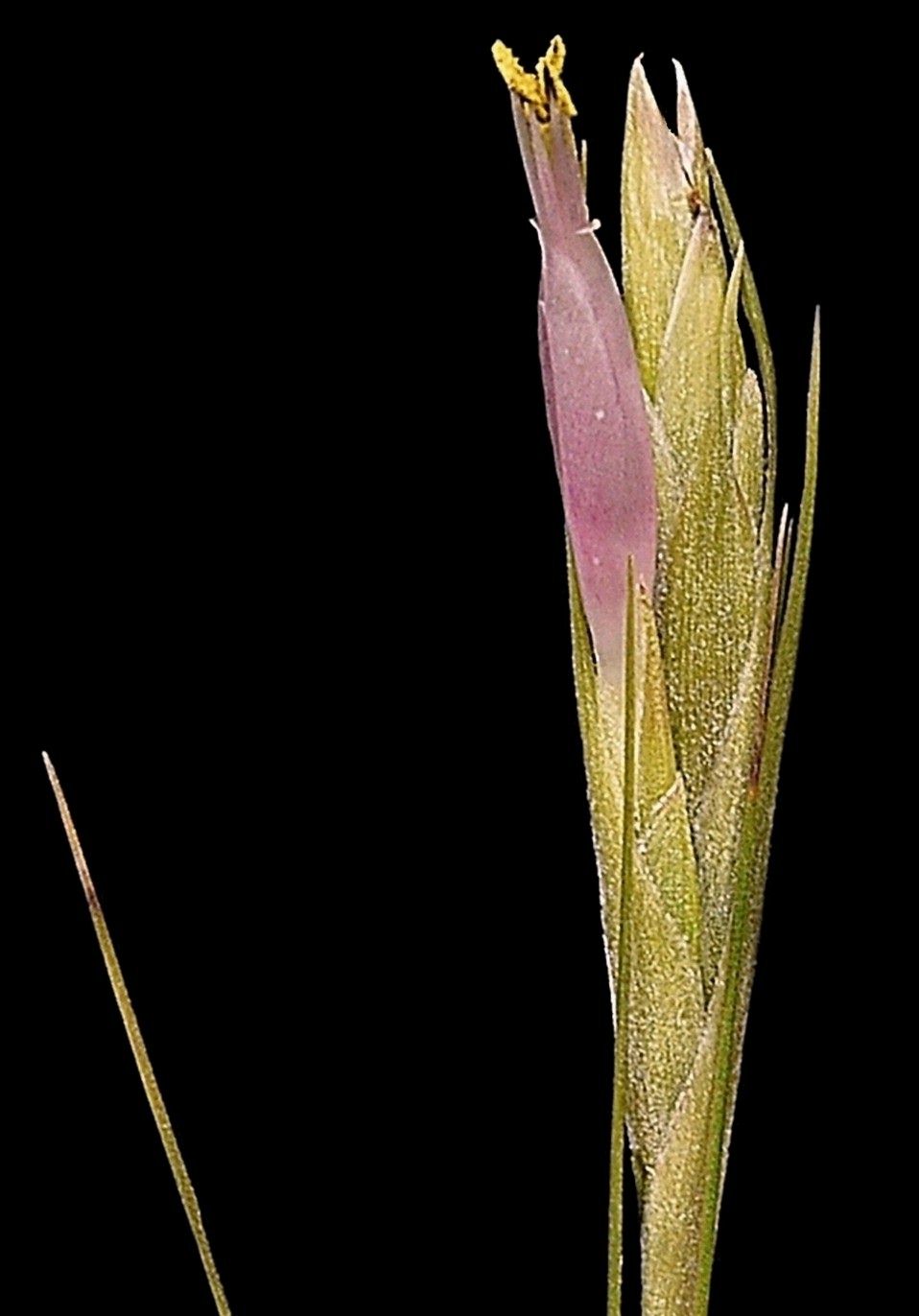
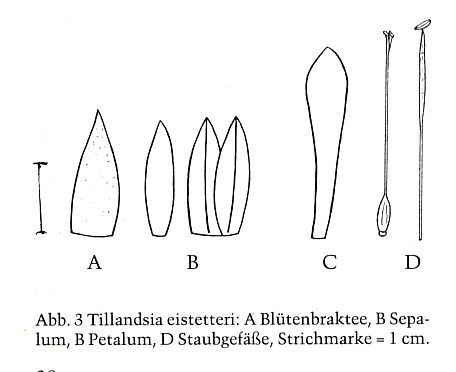
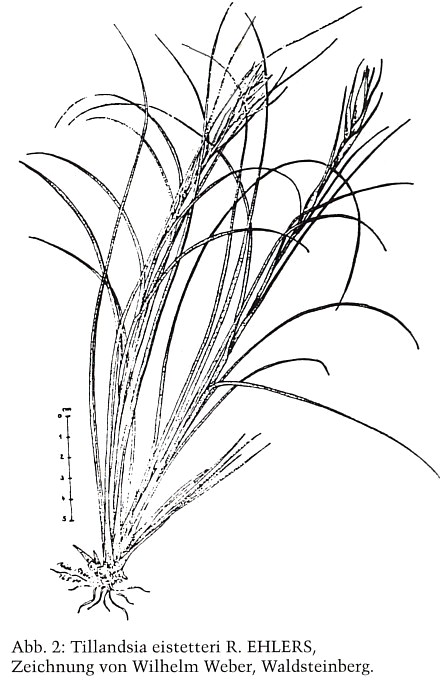
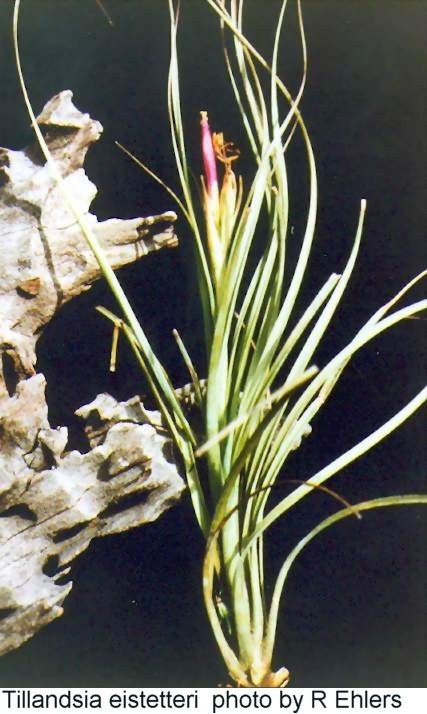
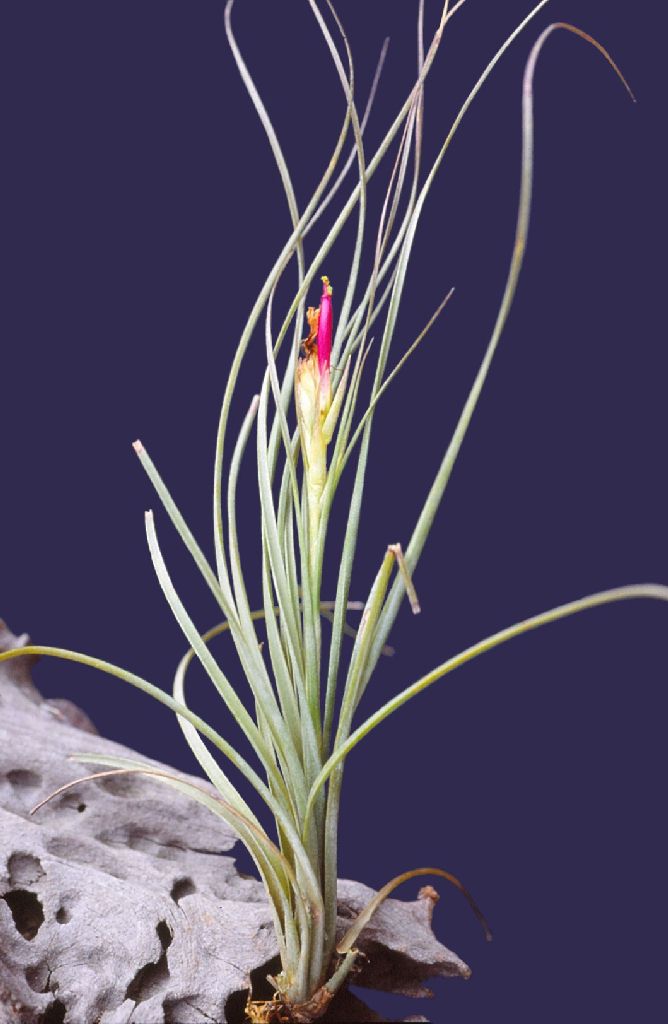
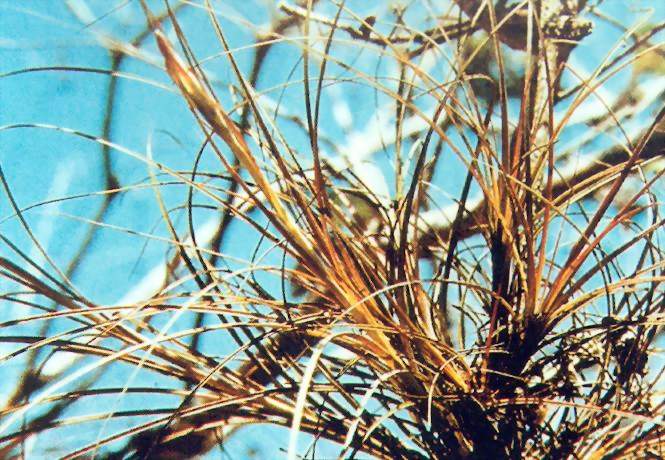
Plant - Stemless, dense bushy, making an erect rosette flowering to 30 cm high. Inflorescence exceeds the leaves, growing into a dense multi-headed grass like thicket.
Leaf Sheath - to 3 cm long, 1.9mm wide, three angled, almost clearly distinguished from blade, brown, inside dense brown, outside fine gray scaled.
Leaf Blade - above the sheath 5mm wide, erect, 7-10cm long 3-4mm wide and narrowly triangular in one long filiform, bent towards the outside, tapering to a tip, the edges bent inwards, green, near stronger sunlight red, both sides with fine grey appressed scales.
Scape - erect, 10-15cm long, 3mm round, densely imbricate and densely covered by the sheath of the leaf like scape bracts, internodes 2.5cm (as long as the sheath), the blade long acuminate filiform erect, the upper shortly tipped.
Inflorescence - Mostly bipinnate with 2 to 5 dense erect, upright, compound spikes, to 5.5cm long, 2cm wide, abundant, however reducing to simple, with dense polystichous flowering spike.
Primary bract - sheath as long as the bottom spike, covering the broad side of the spike, with filiform acuminate tip, hooked tip widely overhanging the top spike, gradually shorter.
Spike - 1.5 to 3.5cm long, thin elliptic, not strongly complanate, partly roundish, 1-3 flowered compound, sometimes an extra sterile bract at the base, erect. Neither the spike rhachis nor the inflorescence rhachis are left visible.
Flower Bract - erect, densely imbricate, 1.4 to 2cm long, 7mm wide, oval acuminate, leathery, red or green, the tip particularly is scaled.
Sepal - to 1.5cm long, 3-4mm wide, lance like, acuminate, green naked, the posterior ones keeled, free.
Petal - 3 to 3.5cm long, the upper portion 6mm wide, narrowing to 3mm at the base, tongue shaped with a bent recess, making an erect tube with tips bent a little towards the outside, red becoming white at the base.
Stamens - overhang the flower by 8mm, filaments 3 to 3.3cm long, arranged in two unequal long rows, the top part 1mm dia. oval, red (similar colour to petal) towards the bottom ribbon like narrow and becoming white.
Anther - 2.5mm long 0.75mm wide, oval, joined at the base variously between 1/3-1/2, brown, pollen egg-yellow.
Style - 2.5cm long, white, stigma lobes small, 1mm high, 1mm wide, like erect and spreading, a few papillae, twisted, (type 1 Brown and Gilmartin) light green.
Ovary - 5mm high, 2.5mm wide, elliptic, triangular in cross section, light green.
Habitat - States of Jalisco and Colima. Mexico.
Type - near Tomatlan on road between Puerto Vallarta and Manzanillo.
Differs from T. SETACEA in that
1 Broader flat leaves not setiform leaves.
2 Inflorescence compound dense spikes which are not turned edgewise to the axis.
3 Spikes not terete.
4 Floral bracts longer.
5 Sepals longer and free.
6 Petals rose-red 1.5 times longer.
Differs from T. PSEUDOSETACEA in that
1 Broader flat leaves.
2 Inflorescence longer than leaves.
3 Inflorescence compound of more spikes.
4 Very long primary bracts.
5 Floral bracts glabrous except for tip.
6 Sepals free.
7 Stamens exserted.